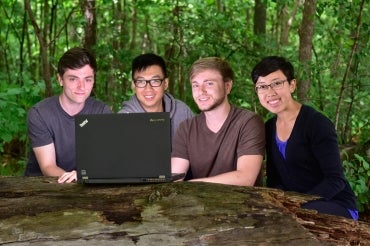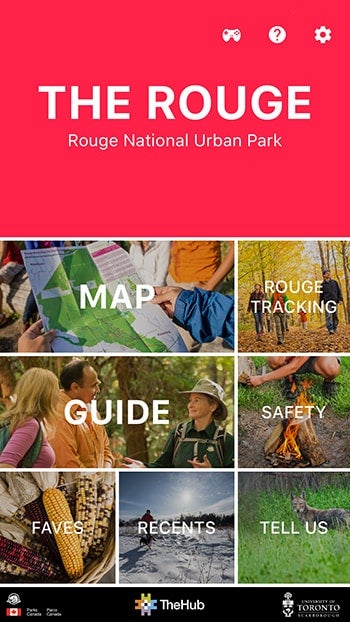U of T co-op students develop app for Rouge National Urban Park

Published: October 23, 2017
A new mobile app for Rouge National Urban Park, developed by University of Toronto students, is like having a seasoned tour guide right in the palm of your hands.
“We wanted the app to be user-friendly and fun, one that highlights the amazing ecology and cultural history for people in real time,” says Kaitlyn Chow, a graduate of the master’s program in environmental science at U of T Scarborough who helped develop the app.
Chow worked on the content side of the app along with fellow environmental science master’s student Winston Lee, while computer science students Derek Etherton, Alex Cavanagh, Dayde Reid and Brian Au developed the technical side.
In gathering information for the app, they hiked the park and consulted with Indigenous groups, local experts, Parks Canada staff, and long-time residents of the area.
“Rouge National Urban Park is the first national park in Canada that’s in an urban setting,” says Chow. “At the same time, it’s ecologically and culturally very rich.”
More than 1,700 species have been documented in the park, which also has a diverse range of habitats, including meadows, wetlands, marshes and farmland, not to mention a stretch of Carolinian Forest found nowhere else in Canada.
The app has two main functions, says Cavanagh, a fourth-year computer science student. In addition to an interactive park map detailing trails and points of interest, users can also turn on a Rouge Tracking feature that acts as a GPS-based virtual tour guide.
“You can receive notifications on important or interesting locations as you’re exploring the park,” he says.
 It also features an interactive game and information about current park activities. There’s also an option for users to report wildlife sightings, trail conditions, garbage and even contact Parks Canada directly about any issues users may come across.
It also features an interactive game and information about current park activities. There’s also an option for users to report wildlife sightings, trail conditions, garbage and even contact Parks Canada directly about any issues users may come across.
The project was part of the students’ work placement with Parks Canada as part of the Arts & Science co-op program, but work on the app took place in The Hub, U of T Scarborough’s centre for innovation and entrepreneurship under the guidance of director Gray Graffam.
“The Rouge app will help to share stories of the Rouge’s amazing history with thousands of Canadians – a rich human history that dates back many thousands of years,” says Pam Veinotte, field unit superintendent of Rouge National Urban Park.
“In the coming months and years, we will be adding to the app more natural history content, more stories from our Indigenous partners, and more fun facts and interesting pieces of information from the national urban park’s amazing cultural and agricultural heritage.”
With so much content packed into the app, the team partnered with IITS at U of T Scarborough to store all of the data. Having a secure location will help make the app flexible as content continuously gets added and updated in the future, says Cavanagh, especially as the park is expected to reach its full size of 79.1 square kilometres when completed.
The app is currently available for download for iOS and Android mobile devices. It was officially launched Saturday, when the Ontario government also announced that it has transferred more than 1,600 acres of lands in the park to Parks Canada.
“It was gratifying to see the ideas we brought to the table come to life and to see Parks Canada respond so positively,” says Cavanagh.
“Being able to see people use the app and have it add to their enjoyment of the park has also been a really special experience.”



